Want to enjoy a fun and competitive darts match at home? This guide will walk you through everything you need, from setting up your dartboard to mastering basic techniques, so you can host unforgettable darts nights. We’ll cover equipment, setup, rules, and even tips for improving your game.
⚠️ Still Using Pen & Paper (or a Chalkboard)?! ⚠️
Step into the future! The Dart Counter App handles all the scoring, suggests checkouts, and tracks your stats automatically. It's easier than you think!
Try the Smart Dart Counter App FREE!Ready for an upgrade? Click above!
Creating the Perfect Setup for Your Darts Match at Home
Setting up your dartboard correctly is crucial for a safe and enjoyable darts match at home. Poor setup can lead to inaccurate throws and even injuries. Let’s break down the essential steps:
Choosing the Right Location
First, select a suitable location. You’ll need enough space for players to stand at the throwing line (also known as the oche) without feeling cramped. A minimum of 8-10 feet of clear space from the dartboard is recommended. Consider factors like lighting and background. A well-lit area with a neutral background helps improve visibility.
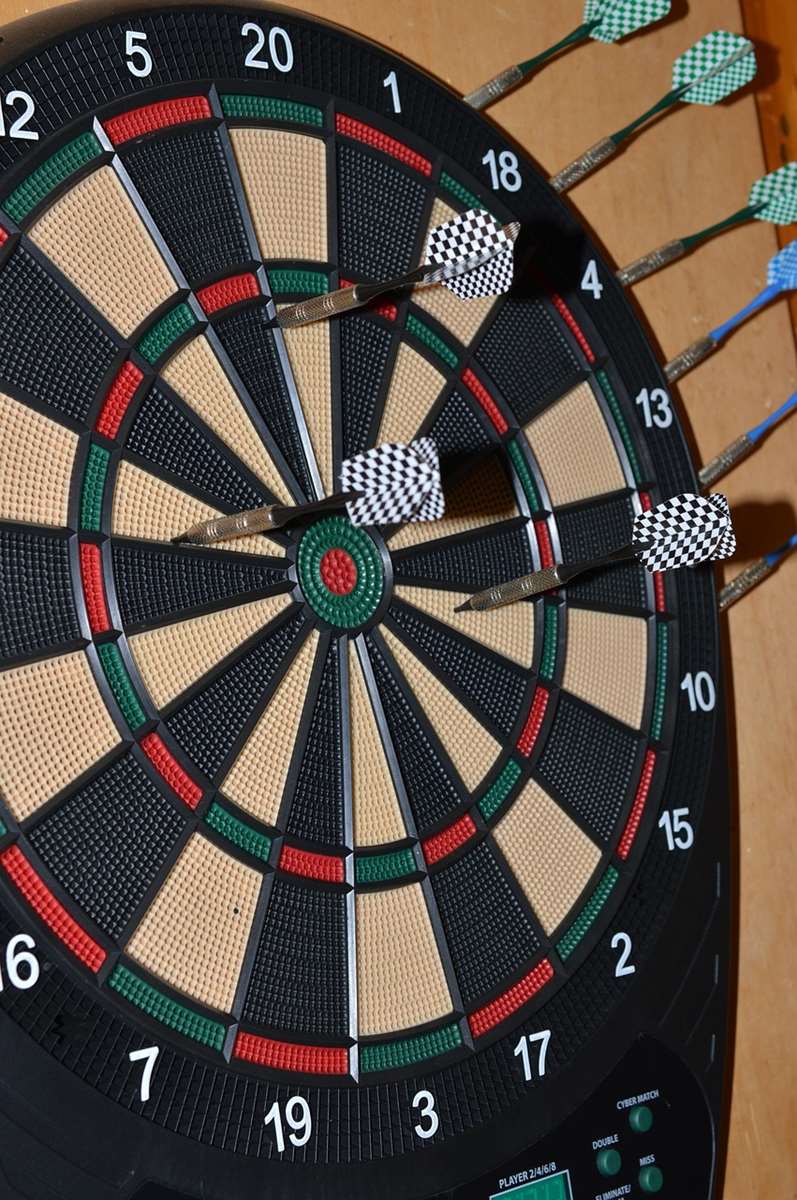
Mounting the Dartboard Securely
The standard height for mounting a dartboard is 5 feet 8 inches (1.73 meters) from the floor to the center of the bullseye. Use a measuring tape and a level to ensure accurate placement. Secure the dartboard to a solid wall using appropriate mounting hardware. Consider using a backboard to protect your wall from stray darts and provide a larger target area. This is especially important if you’re planning frequent darts matches at home.
Establishing the Oche (Throwing Line)
The oche should be 7 feet 9 1/4 inches (2.37 meters) from the face of the dartboard for steel-tip darts. For soft-tip (electronic) darts, the distance may vary slightly, so consult the manufacturer’s instructions. Clearly mark the oche using tape or a dedicated darts mat. Ensure all players throw from behind this line to maintain fair play.
Essential Equipment for Your Home Darts Setup
While a dartboard and darts are the obvious necessities for a darts match at home, having the right accessories can greatly enhance your experience. Here’s a breakdown of essential equipment:
- Dartboard: Choose a high-quality bristle dartboard for durability and self-healing properties.
- Darts: Invest in a set of darts that suit your throwing style. Consider factors like weight, grip, and shaft length. Experiment with different types of darts flights to find what works best for you. You can read more here.
- Dartboard Surround: Protect your wall from stray darts with a dartboard surround. These come in various materials, including foam and rubber.
- Oche Line/Mat: Clearly define the throwing line with tape or a dedicated darts mat.
- Scoreboard: Keep track of scores with a traditional chalkboard, a whiteboard, or an electronic scoreboard. You could even use an App to score darts.
- Lighting: Proper lighting is crucial for visibility. Consider using a dedicated dartboard lighting system or strategically placed spotlights.
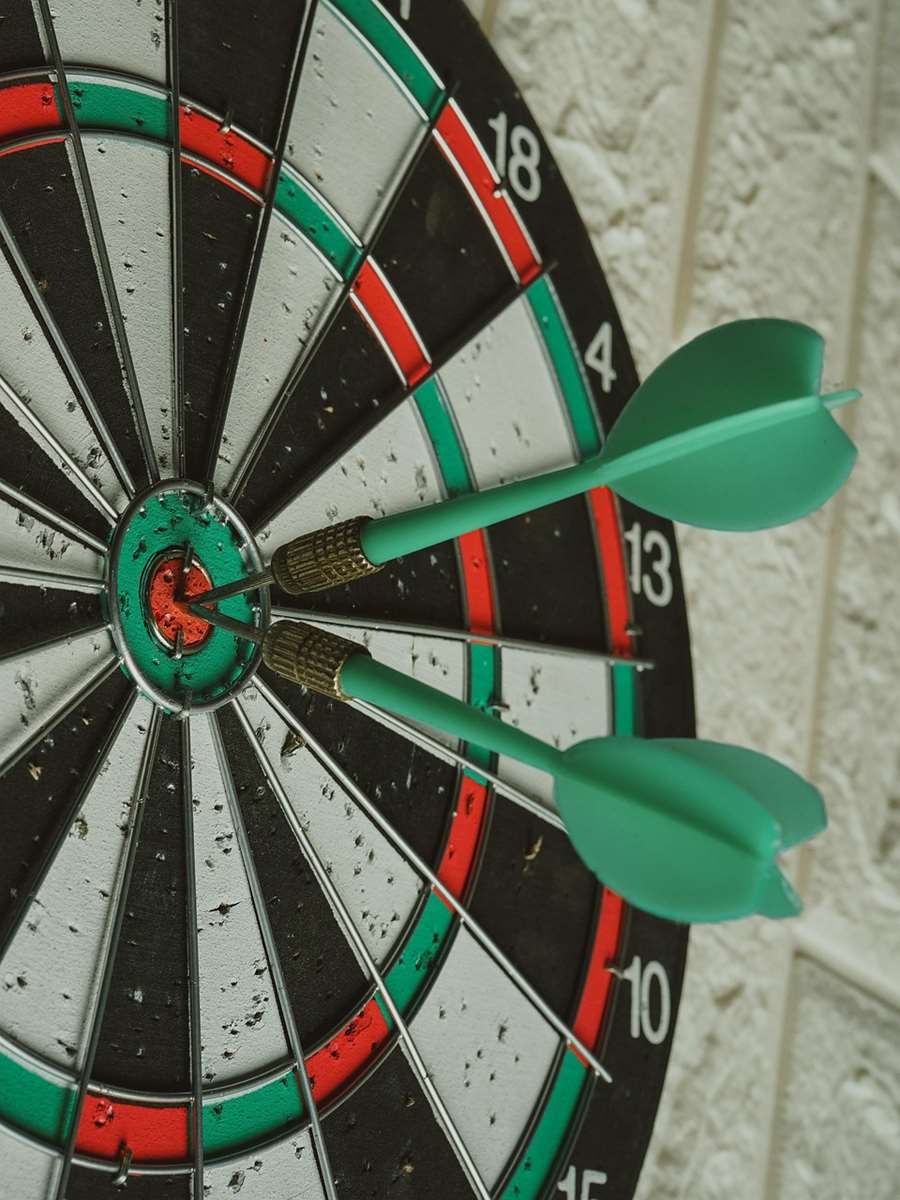
Understanding the Rules of Darts
Before hosting your darts match at home, it’s essential to understand the basic rules of the game. Here’s a summary of the most common darts game, 501:
501: The Standard Game
- Each player starts with 501 points.
- Players take turns throwing three darts at the dartboard.
- The score from each throw is subtracted from the player’s remaining total.
- The goal is to be the first player to reduce their score to exactly zero.
- The final dart must be a double or the bullseye (which also counts as a double).
- If a player scores below zero, or reaches one, the throw is a bust and the player’s score reverts to the total before the throw.
Variations and Other Games
While 501 is the most common game, there are other variations you can play during your darts match at home, such as:
- Cricket: A strategic game where players aim to “close out” numbers by hitting them three times.
- Around the Clock: Players must hit each number on the dartboard in sequence, from 1 to 20.
Improving Your Darts Skills
Whether you’re a beginner or an experienced player, there’s always room for improvement. Here are some tips to help you hone your darts skills and dominate your next darts match at home:
Stance and Grip
Maintain a consistent stance, with one foot forward and your weight balanced. Experiment with different grips to find one that feels comfortable and provides good control. A proper grip is critical for accuracy. Consider also the darts throwing line name. Find more information on the topic here.
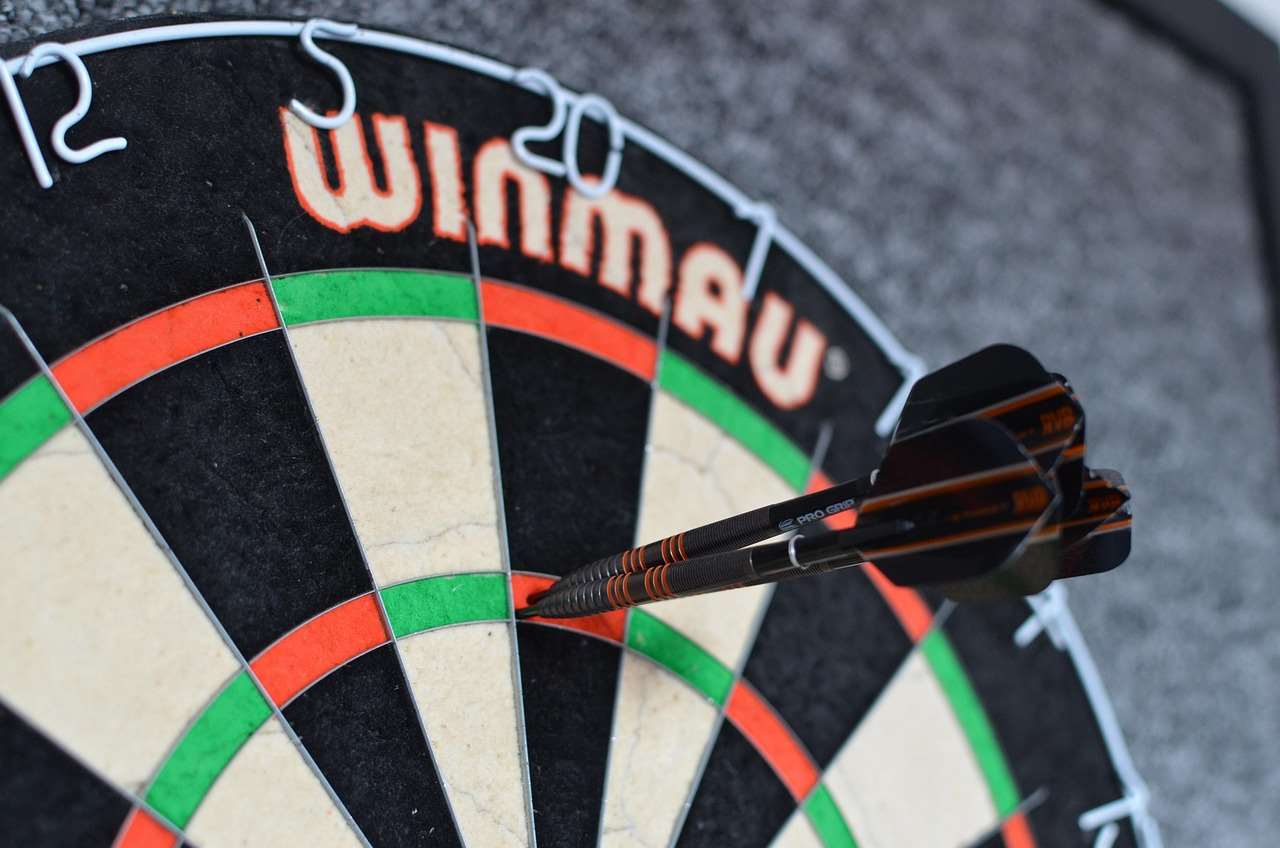
Throwing Technique
Focus on a smooth and controlled throwing motion. Avoid jerky movements and follow through with your arm after releasing the dart. Aim for consistency in your release point. Develop a pre-throw routine to ensure you’re relaxed and focused.
Practice and Consistency
Regular practice is key to improving your darts skills. Dedicate time to practice specific targets and outshots. Consistent practice will help you develop muscle memory and improve your accuracy. Use a dartboard training app or website to track your progress and identify areas for improvement.
Mastering Outshots
Knowing your darts outshots is essential for winning games of 501. Common outshots include 40 (double 20), 32 (double 16), and 50 (bullseye). Practice these outshots regularly to improve your chances of finishing strong. You can find more tips here.
Adding Fun and Competition to Your Darts Match at Home
Hosting a darts match at home should be a fun and enjoyable experience for everyone involved. Here are some tips for adding excitement and competition:
Creating a Tournament Format
Organize your darts match at home as a tournament with brackets and elimination rounds. This adds a sense of competition and excitement. Consider offering prizes for the winners.
Adding Side Games and Challenges
Incorporate side games and challenges to keep things interesting. For example, you could have a “highest score” competition or a “most bullseyes” challenge.
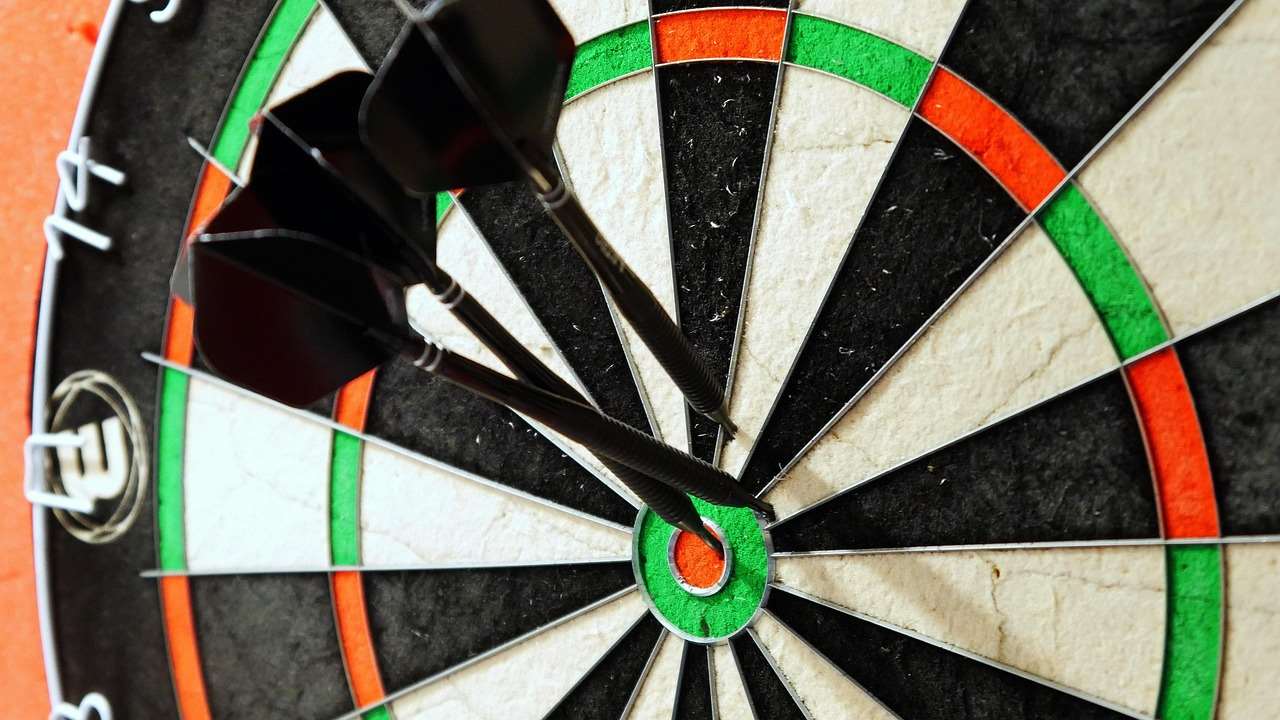
Creating a Darts-Themed Atmosphere
Set the mood for your darts match at home by creating a darts-themed atmosphere. Play some music, put up some decorations, and serve some snacks and drinks. You can find decorations like dart-themed posters or strings of lights shaped like darts. Consider serving snacks and beverages that are easy to eat and drink while playing, like chips, pretzels, and soda. Maybe you even have a sneaky darts double vodka?
Keeping Score and Tracking Stats
Use a scoreboard or a darts scoring app to keep track of scores and stats. This adds a level of transparency and allows players to track their progress over time. Consider tracking stats like average score, highest score, and number of bullseyes.
Safety Considerations for Your Darts Match at Home
While darts is generally a safe game, it’s important to take precautions to prevent accidents and injuries during your darts match at home:
- Clear the Area: Ensure that the area around the dartboard is clear of obstacles and bystanders.
- Proper Lighting: Good lighting is crucial for visibility and accuracy, reducing the risk of misthrows.
- Dartboard Surround: Use a dartboard surround to protect your wall and prevent darts from bouncing back.
- No Throwing When Others are Near: Emphasize that players should only throw when the area is clear and everyone is aware.
- Store Darts Safely: When not in use, store darts in a safe place, out of reach of children and pets.
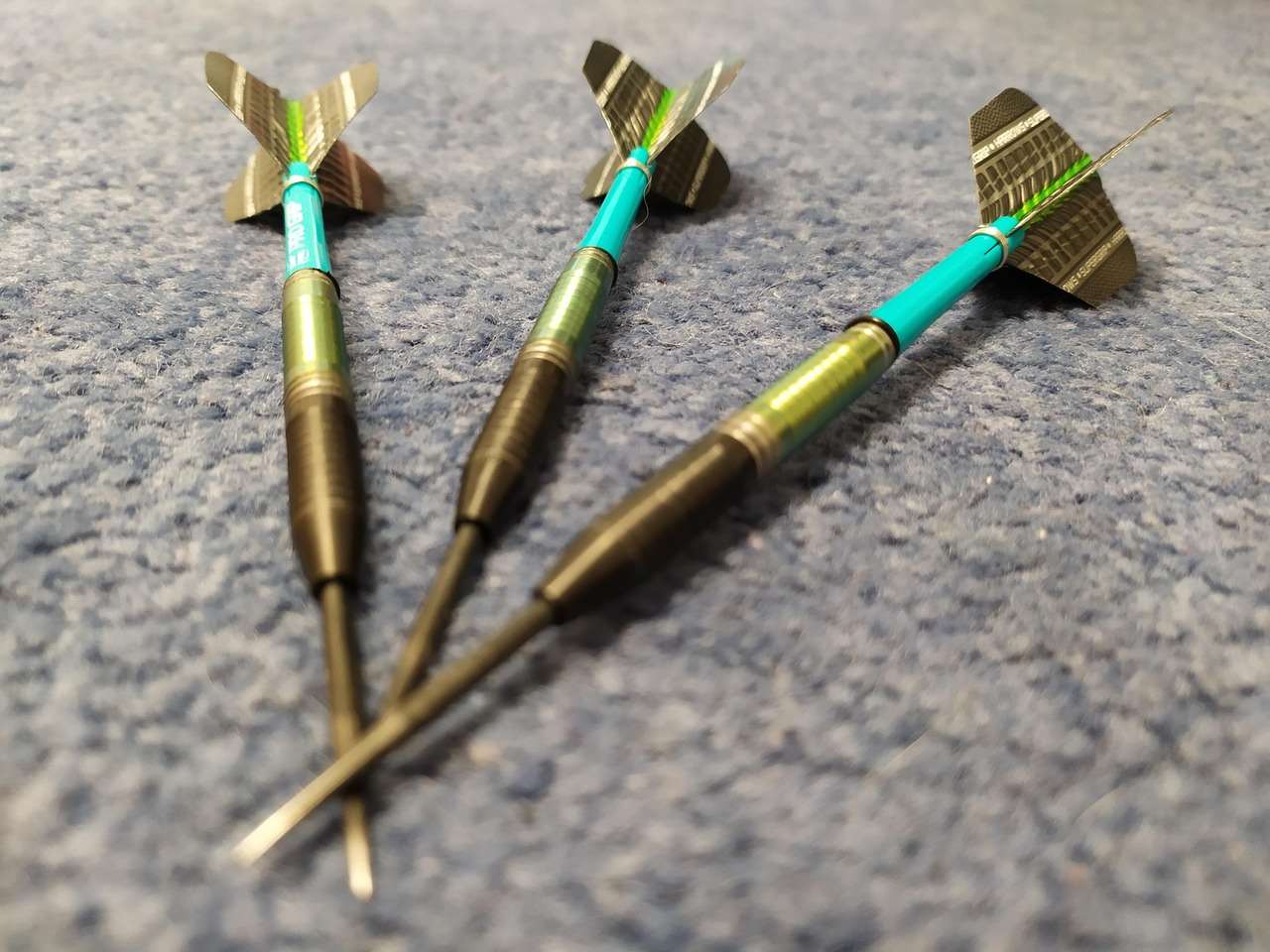
Troubleshooting Common Darts Problems
Even with the best setup and technique, you may encounter some common problems during your darts match at home. Here are some troubleshooting tips:
- Darts Bouncing Out: This can be caused by dull dart points, a worn dartboard, or throwing with too much force. Sharpen your dart points regularly, rotate your dartboard to even out wear, and adjust your throwing technique.
- Inconsistent Throws: Inconsistent throws can be caused by a variety of factors, including poor stance, grip, or throwing motion. Focus on maintaining a consistent routine and identifying any flaws in your technique.
- Low Scores: If you’re consistently scoring low, focus on practicing specific targets and outshots. Consider using a dartboard training app or website to track your progress and identify areas for improvement.
Conclusion
Hosting a darts match at home is a fantastic way to have fun, socialize, and enjoy some friendly competition. By following the tips and guidelines outlined in this article, you can create the perfect setup, master the rules, improve your skills, and ensure a safe and enjoyable experience for everyone involved. So, gather your friends, sharpen your darts, and get ready to enjoy countless hours of fun with your very own darts match at home! Why not browse some of our other content related to different aspects of the game like darts corner shafts, what is electronic darts, or maybe learn a little more about darts winner luke? Start planning your first darts match at home today!
Hi, I’m Dieter, and I created Dartcounter (Dartcounterapp.com). My motivation wasn’t being a darts expert – quite the opposite! When I first started playing, I loved the game but found keeping accurate scores and tracking stats difficult and distracting.
I figured I couldn’t be the only one struggling with this. So, I decided to build a solution: an easy-to-use application that everyone, no matter their experience level, could use to manage scoring effortlessly.
My goal for Dartcounter was simple: let the app handle the numbers – the scoring, the averages, the stats, even checkout suggestions – so players could focus purely on their throw and enjoying the game. It began as a way to solve my own beginner’s problem, and I’m thrilled it has grown into a helpful tool for the wider darts community.